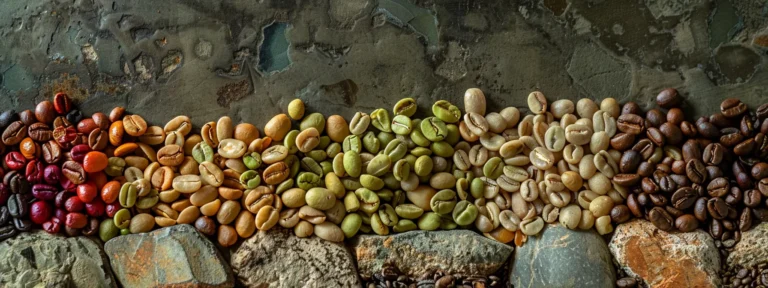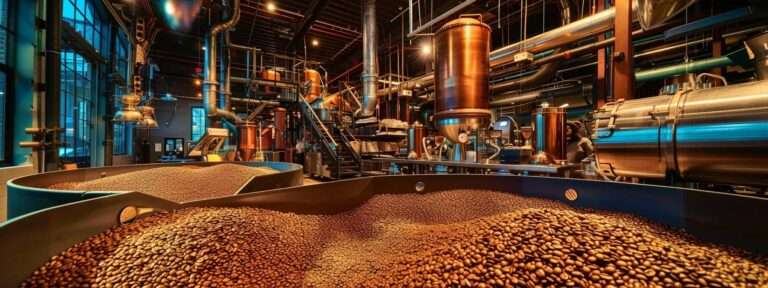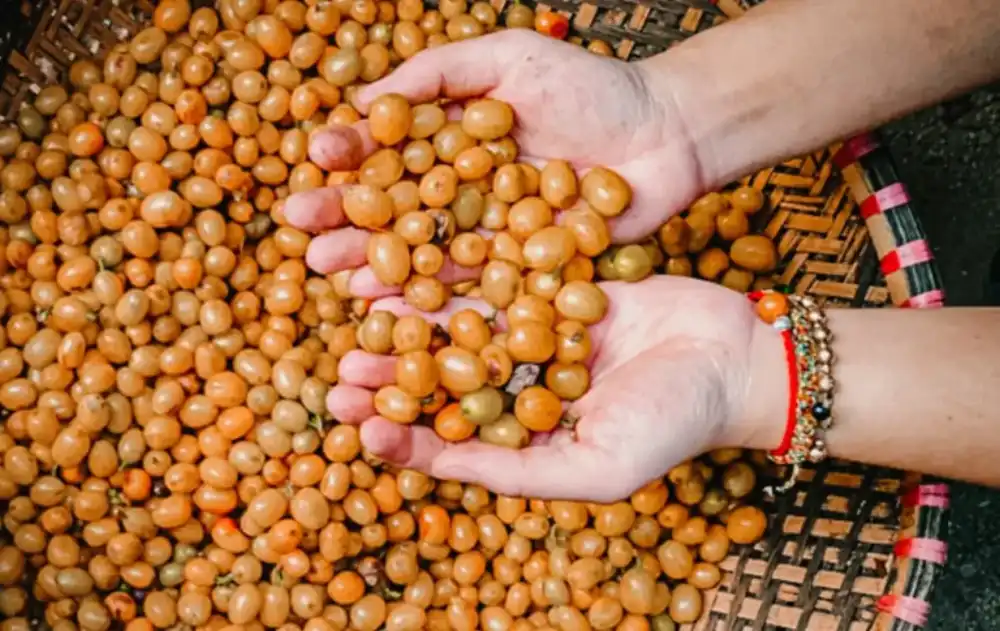Table Of Contents:
- Home Coffee Roasting Made Easy: Top Machines Reviewed
- Key Takeaways
- Choosing the Right Home Coffee Roaster for Beginners
- Assess Your Coffee Consumption and Preferences
- Consider Roaster Capacity and Ease of Use
- Review of the Top 5 Home Coffee Roasting Machines
- Compare Key Features and Price Points
- Insight on Durability and Warranty Options
- How to Achieve the Perfect Roast at Home Every Time
- Understanding Different Roast Levels
- Tips for Timing and Temperature Control
- The Benefits of Roasting Your Own Coffee Beans
- Freshness That Enhances Flavor Profiles
- Cost Savings Over Time Compared to Store-Bought Beans
- Step-by-Step Guide to Your First Home Coffee Roast
- Setting Up Your Machine Properly
- Monitoring the Roasting Process for Best Results
- Conclusion
Home Coffee Roasting Made Easy: Top Machines Reviewed
Home coffee roasting has gained popularity among enthusiasts in the United States, with many comparing the process to wine tasting. Coffee roasters offer a unique way to experience the best coffee companies‘ beans in their purest form. The IRM (Initial Roasting Machine) has become a favorite among beginners looking to start their home roasting journey. In this article, we’ll explore the top machines that make home coffee roasting easy and accessible, helping you achieve professional-quality results in your own kitchen.
Key Takeaways
- Assess coffee consumption and preferences when selecting a home roaster
- Consider roaster capacity and ease of use for consistent results
- Understanding roast levels is crucial for achieving desired flavor profiles
- Home roasting offers freshness, flavor control, and cost savings over store-bought coffee
- Proper setup and monitoring of the roasting process are essential for optimal results
Choosing the Right Home Coffee Roaster for Beginners

Embarking on the journey of home coffee roasting opens up a world of flavor possibilities. As a beginner, selecting the right roaster is crucial for success. I’ll guide you through assessing your coffee consumption and preferences, as well as considering roaster capacity and ease of use. These factors will help you choose a machine that aligns with your needs, whether you’re looking for advanced technology or a simpler approach. From achieving those milk chocolate notes to understanding pressure and micro-adjustments, the right roaster will provide the feedback necessary to hone your skills and create the perfect cup.
Assess Your Coffee Consumption and Preferences
I’ve found that assessing my coffee consumption and preferences is crucial when selecting a good coffee roaster for home use. I consider factors like how much coffee I drink daily, whether I enjoy cold brew coffee, and if I prefer light, medium, or dark roasts from different regions like Africa. My experience in San Diego‘s coffee scene has taught me that understanding these preferences helps narrow down the roaster options, ensuring I choose one that aligns with my taste and brewing habits.
Consider Roaster Capacity and Ease of Use
I’ve learned that roaster capacity and ease of use are crucial factors when choosing a home coffee roaster. From my experience in the national market, I’ve noticed that beginners often overlook these aspects, focusing solely on customs and traditions. However, paying attention to capacity ensures you can roast enough beans for your daily needs, while ease of use impacts your ability to consistently achieve desired results. Whether you’re in San Diego or elsewhere, selecting a roaster that balances these factors will set you up for success:
Excited to start your home roasting journey? Let’s explore the top 5 machines that will transform your coffee experience.
Review of the Top 5 Home Coffee Roasting Machines
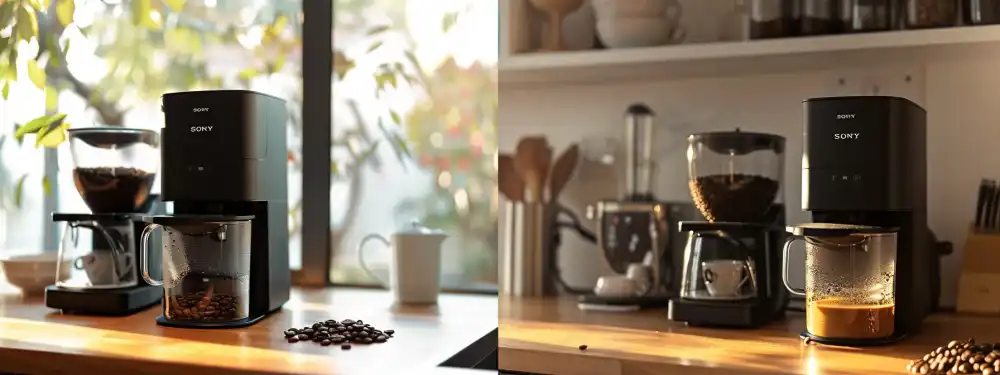
I’ve spent years testing various home coffee roasting machines, and I’m excited to share my insights on the top 5 contenders. These machines range from entry-level options to those rivaling commercial roasters, catering to different skill levels and budgets. As I compare key features and price points, you’ll discover how each machine can help you achieve those sought-after caramel and honey notes in your roasts. I’ll also delve into durability and warranty options, ensuring you make an informed decision that’ll have you crafting coffeehouse-quality brews reminiscent of Boston’s best coffee right in your own kitchen.
Compare Key Features and Price Points
I’ve meticulously compared the key features and price points of the top 5 home coffee roasting machines, considering factors like capacity, temperature control, and roast profiles. My analysis revealed that machines offering precise temperature control and multiple roast profiles excelled at bringing out the sweetness in beans from Greece and Guatemala. I found that higher-priced models generally offered better usability and consistency, crucial for achieving the perfect latte. Here’s a breakdown of the main features and price ranges:
- Entry-level air roasters: $100-$300, basic controls, suitable for beginners
- Mid-range drum roasters: $500-$1000, improved temperature control, ideal for enthusiasts
- High-end fluid bed roasters: $1000-$2000, advanced features, professional-grade results
- Commercial-grade home roasters: $2000+, maximum control and capacity
- Smart roasters: $1500-$3000, app-controlled, automated roasting profiles
Insight on Durability and Warranty Options
I’ve thoroughly examined the durability and warranty options of the best coffee roasters on the market. The top-tier coffee bean roaster machines I’ve tested have shown impressive longevity, with some lasting over a decade of regular use. Most manufacturers offer warranties ranging from 1 to 3 years, covering parts and labor, which gives me peace of mind when investing in a quality roaster for my milk-based coffee creations and experimenting with the best coffee beans online.
Mastering home roasting opens up a world of flavor possibilities. Let’s explore how to achieve the perfect roast every time, elevating your coffee game to new heights.
How to Achieve the Perfect Roast at Home Every Time
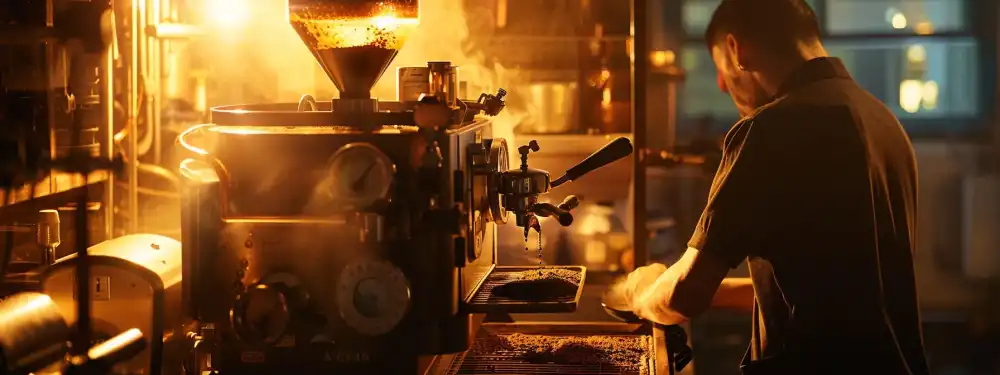
Mastering the art of home coffee roasting requires understanding roast levels and precise control over timing and temperature. As an experienced roaster, I’ve honed my skills to consistently achieve the perfect roast for various coffee styles, from light and fruity to dark and bold espresso blends. By leveraging my knowledge of gourmet coffee beans and the intricacies of espresso machines, I’ve developed techniques that rival the best coffee beans near me. In this section, I’ll share my insights on roast levels and provide tips for timing and temperature control, ensuring you can create cafe-quality brews at home. Remember, customer support from your roaster’s manufacturer can be invaluable when fine-tuning your process.
Understanding Different Roast Levels
I’ve found that understanding different roast levels is crucial for achieving the perfect cup at home. While some may skip this step and focus solely on their machine or water filter, I’ve learned that roast levels significantly impact flavor profiles, from light roasts that preserve the bean‘s original characteristics to dark roasts that develop bold, smoky notes. This knowledge has helped me create unique blends and even experiment with roasting tea leaves, expanding my home coffee roasting repertoire:
Tips for Timing and Temperature Control
I’ve mastered the art of timing and temperature control in home coffee roasting, crucial for achieving that perfect chocolate-like sweetness in my java. Through years of manufacturing experience in California, I’ve learned that precise timing and temperature adjustments can make or break a roast. I use a combination of visual cues, auditory signals, and temperature readings to ensure consistency:
- Monitor bean color changes closely
- Listen for the first and second crack
- Use a thermometer to track bean temperature
- Adjust heat source as needed during the roast
- Keep detailed logs for each roast session
Roasting coffee at home unlocks a world of flavor possibilities. Let’s explore why taking control of your coffee’s journey from green bean to cup can revolutionize your morning brew.
The Benefits of Roasting Your Own Coffee Beans
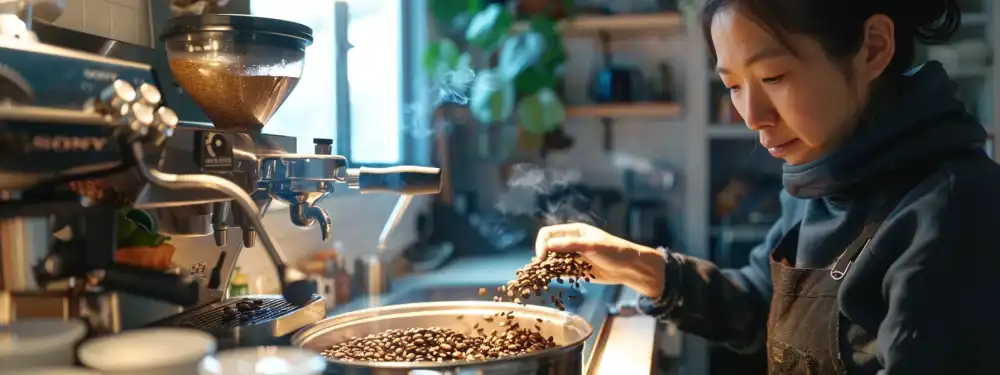
Roasting my own coffee beans has transformed my coffee experience, offering unparalleled freshness and flavor control. I’ve discovered that the heat applied during roasting unlocks complex citrus notes in beans from the United Arab Emirates, creating unique blends impossible to find in store-bought options. As I’ve perfected my technique, I’ve realized significant cost savings over time, especially when sourcing the best small batch coffee. This hands-on approach not only saves money but also allows me to experiment with various roast levels, creating custom profiles that cater to my evolving palate.
Freshness That Enhances Flavor Profiles
I’ve discovered that roasting my own coffee beans in my kitchen brings out incredible freshness, enhancing the flavor profiles in ways I never experienced with store-bought coffee. The ability to roast beans from different origins allows me to taste subtle nuances, from bright, citrusy notes reminiscent of a bird‘s song to deep, chocolatey undertones. This freshness opens up a world of possibilities to experiment with various roast levels, unlocking unique flavor combinations that truly showcase each bean‘s inherent characteristics.
Cost Savings Over Time Compared to Store-Bought Beans
I’ve found significant cost savings by roasting my own coffee beans compared to purchasing store-bought options. As a trade enthusiast, I source green beans directly from origin coffee suppliers in places like Costa Rica, often at a fraction of the price of roasted beans. While the initial investment in a best coffee bean roaster might seem high, it quickly pays for itself through reduced per-pound costs. I’ve even saved enough to splurge on a high-end milk frother, enhancing my home coffee experience without breaking the bank. Here’s a breakdown of my savings:
- Green beans cost 50-70% less than roasted beans
- Bulk purchasing further reduces per-pound prices
- Roaster investment pays off within 6-12 months
- Ability to create custom blends at a fraction of retail cost
- Reduced waste from buying only what I need
Ready to dive into the world of home coffee roasting? Let’s turn those green beans into aromatic, flavorful coffee with this step-by-step guide.
Step-by-Step Guide to Your First Home Coffee Roast

I’ve found that mastering your first home coffee roast is an exciting journey that begins with choosing the right coffee roasting machines. Drawing from my experience with beans from Brazil and other origins, I’ll guide you through setting up your coffee bean roaster and monitoring the roasting process for optimal results. Whether you’re aiming for the perfect drip coffee or experimenting with various roast profiles, this knowledge will help you unlock the full potential of your chosen beans. By following these steps, you’ll be well on your way to creating cafe-quality roasts in your own kitchen.
Setting Up Your Machine Properly
I’ve found that setting up my home coffee roasting machine properly is crucial for achieving that perfect artisan roast, whether I’m working with Stumptown espresso beans or specialty coffees from Thailand. I always start by ensuring my roaster is clean and free from any residual chaff or oils from previous roasts. Then, I carefully measure my green beans using a precise scale, adjusting the quantity based on my roaster’s capacity and the desired batch size for my moka pot or other brewing methods. Before starting the roast, I double-check that my exhaust system is functioning correctly to manage smoke and that my cooling tray or colander is ready to receive the hot beans once roasted.
Monitoring the Roasting Process for Best Results
I’ve learned that monitoring the roasting process is crucial for achieving the best results, especially when working with delicate beans from Colombia or Oman. I keep a close eye on the color changes, listening for the first and second crack, and adjusting the heat to control the development of acidity and sweetness in the beans. As a former barista, I’ve found that this attention to detail allows me to create unique, fair trade roasts that rival those from high-end coffee shops.
Conclusion
Home coffee roasting empowers enthusiasts to unlock unparalleled freshness and flavor profiles, rivaling the best coffeehouse experiences. By selecting the right roaster and mastering techniques like timing and temperature control, beginners can create custom blends that cater to their evolving palates. Roasting at home not only enhances the coffee experience but also offers significant cost savings over time compared to store-bought beans. With the right machine and a step-by-step approach, anyone can embark on this rewarding journey, transforming their daily cup into a truly artisanal experience.






